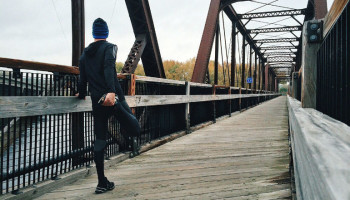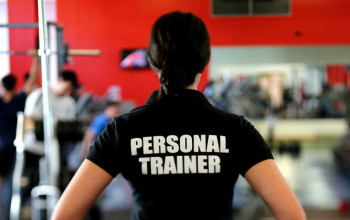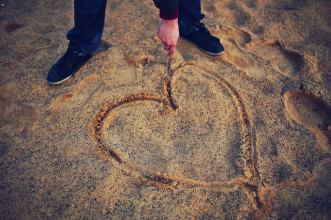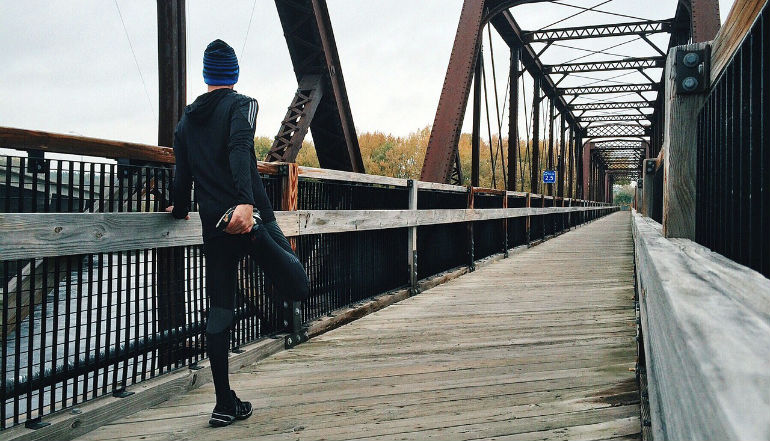 Reading Time: 7 minutes
Reading Time: 7 minutesI’ve been in the fitness coaching business for over 25 years, and in that time, I’ve tried many strategies to gain leverage over people. Why do I need leverage? Because when left to their own devices, people invariably make choices that undermine their own best intentions to get fitter and healthier.
It’s easy to make the “right” choices in the presence of your coach or trainer, but it’s a different story when you’re back at work, at home alone, at a party, or opening the freezer for a midnight snack. Willpower alone won’t do it — and believing that it can will only leave you frustrated.
So, I’ve been devising strategies to help people more successfully navigate these choices since day one of my fitness coaching career. And that’s actually how the Whole Life Challenge came into being.
Where Challenges Typically Fall Short
In 2010, I was the owner of CrossFit Los Angeles and Michael Stanwyck was my head coach. We sat down one day for a brainstorm session with the goal of figuring out how to bring a greater context of true health and well being to our clients.
Our community was rabid for fitness. Most of them showed up five days a week for workouts that kicked their butts. But ask them to get to bed earlier, skip the wine or after-dinner treat, drink more water, stretch, or meditate? Forget it. There were always the outliers, but for the most part, influencing the lives our clients outside the gym was a losing battle.
The challenges we’d run up until that point were focused only on fitness – more of what our clients were already doing. They were effective and fun (we often had hundreds participate), but they missed the mark we were shooting for. They didn’t address all the other aspects of health and well-being that simply doing more exercise does nothing to improve.
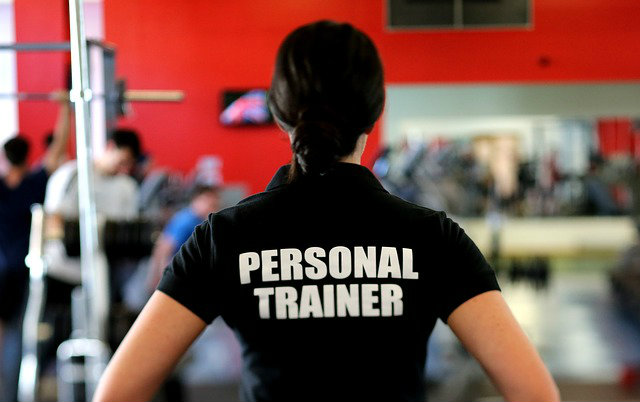
The Birth of the Whole Life Challenge
We first thought the answer was in education and information. Michael went to work, creating something called “Food University.” It was an eight-week program that required participants to get blood work done and attend nutrition and cooking classes at the gym. While Food U. was full of fantastic information and a huge a success in concept and execution, it failed to make a real impact. Of the twelve people who started, only three finished. When your community is composed of over 300 members, three doesn’t begin to scratch the surface.
So, we went back to the drawing board — a big whiteboard on the wall in our coaches’ bullpen, in fact. We asked ourselves, “How could we take the educational concepts from Food U. and create something that garners large-scale participation and action, not just conceptual learning?” This led us to ask even more questions:
- What if we took the structure of our fitness challenges and added in daily check-ins for nutrition, stretching, drinking water, exercise, and reflection?
- What if we made it fun by giving each of these things point values, and having teams and a leaderboard?
- What if we could bring in other areas of well-being — practices like de-cluttering, gratitude, mindfulness?
- And what if we could create a sense of community throughout the challenge by having a public message board and a way for people to interact outside of the gym?
We answered ourselves with a resounding yes to all of the above!
The focus of this new challenge would be on helping participants develop healthy habits using the magic of consistency in small daily doses, compounded over time. There’d be no mandated workouts or requirement for intensity. No specific diet or food plans other than eating wholesome foods that minimized inflammation. No specific duration for sleep. No mandated stretch of the day or week.
We would provide a structure, a system of daily checking-in that included nutrition, exercise, stretching, taking fish oil (or any supplement), and a weekly rotating bonus practice. These five elements would evolve over time to the 7 Daily Habits we have today.

The players would bring the game into their life and make it their own — tailoring it to their needs and their goals. The focus of this challenge would be on players making small, incremental improvements in daily choices — to walk up the stairs instead of riding the escalator or elevator, to stretch when watching television, to push the bread basket away and skip dessert entirely, to sleep a little bit more, to write a bit in reflection, and perhaps to meditate.
This approach would allow an eighty-something grandmother to participate alongside of her twenty-something grandson by having everyone decide for themselves if what they did that day was worthy of the “exercise” distinction. We would use this approach for each of the daily habits — so the challenge as a whole would be self-directed, self-implemented, and self-judged.
We would also use a point system, so players could measure daily progress and get immediate feedback on their choices. This was an important element for us, since with habits that concern health and well-being, feedback from your body often comes years too late — long after you’ve slid down the slippery slope of disease and dysfunction.
Our intention was for players to ride the precarious line between the excitement and desire for points, competition, and perfection while exploring their relationship with self-acceptance, happiness, and joy. Points and a leaderboard would serve an important purpose — helping our naturally competitive players measure their progress, stay awake in the game, and be accountable.
We took on the responsibility for communicating and messaging the flip-side – that in matters relating to your health, body and well-being, winning isn’t about perfection, earning points, or beating anyone else. In fact, it’s quite the opposite. Well-being is about self-acceptance and self-love, and living in a place where nothing else is needed or missing. It’s an important balancing act that requires diligence and practice for mastery.
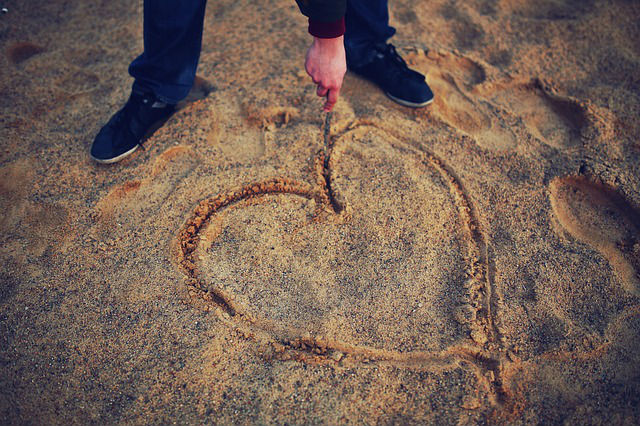
The name was the last piece of the puzzle. After brainstorming over fifty other options, Michael came up with it. We’d call it the Whole Life Challenge, because it was, in fact, about your whole life.
Would it work? Honestly, we had no idea. But we did know that incredibly small changes in habits, when acted upon consistently over a period of weeks, months, and years, can lead to major, life-changing improvements.
As experienced coaches, we would take consistency over intensity or volume any day of the week, and consistency, compounded over time was the simple foundation for the Challenge. Something like this, that could drive that sort of behavior was inspiring, exciting, and definitely worth trying.
How Our Theory Played Out
That first Challenge in 2011 was successful beyond our wildest imaginations. With about 150 players, the Challenge got participants into action, making them both responsible and accountable for the daily choices that would move them toward a happier and healthier life.
The Challenge players saw changes in their daily habits that resulted in physical, mental, and emotional improvements like never before. It also brought our gym members closer together as a community, allowing them to rely on and support one another in their journey — even beyond the end of the Challenge.
The WLC has grown exponentially since that first Challenge — we’ll have over 20,000 participants join us this month. Why? The Whole Life Challenge delivers results and is a competition like no other. Everyone wins, since all it takes to “win” is a commitment to showing up. And when people get the results they desire, they tell other people about it. That’s a gift that any of us would want to pass along.

The Whole Life Challenge Now and in the Future
In the years since that first Challenge, we’ve built a worldwide community, a nurturing and self-regulated environment, and a healthy context, inside of which people continue to address their daily habits and make small changes to improve their lives. The Challenge works for anyone, of any age, fitness level, gender, experience, or weight. And it works great for teams, companies, trainers, gyms, groups, communities, and families, since the foundation is built around camaraderie, support, and integrity in a framework of health and well-being.
It’s funny thinking back to that original day Michael and I spent at the whiteboard trying to find a new method for gaining leverage over our gym members. Leverage is a funny thing since it implies getting people to do something they don’t want to do. But the reason people hire trainers is not because they don’t know what to do or because they don’t want to do it, but because when left to their own devices, they simply don’t move forward.
For most of us, the resistance to taking action when we have to make the choice in the middle of a busy day, at an important business lunch, or when we’re exhausted in the evening is huge. And that’s what makes the Whole Life Challenge amazing — it not only gave us leverage over our those original clients, but it also empowered them and gave them connection to others going through the same struggle.
And it continues to do so. Because the people who participate in the Challenge gain leverage over themselves.
